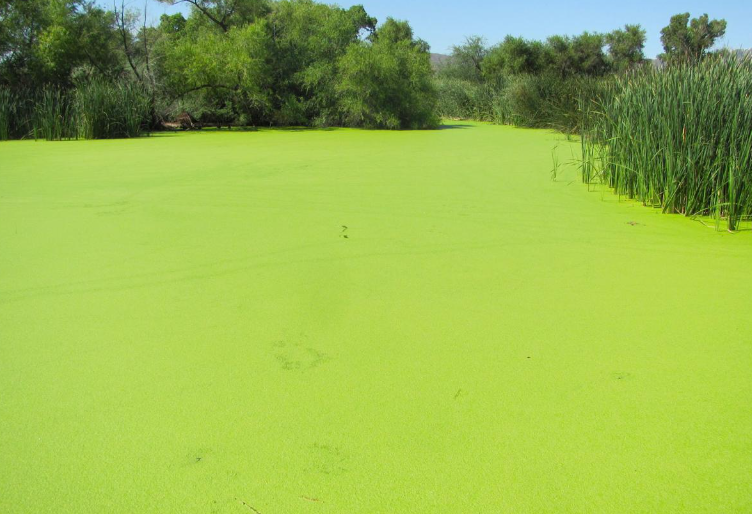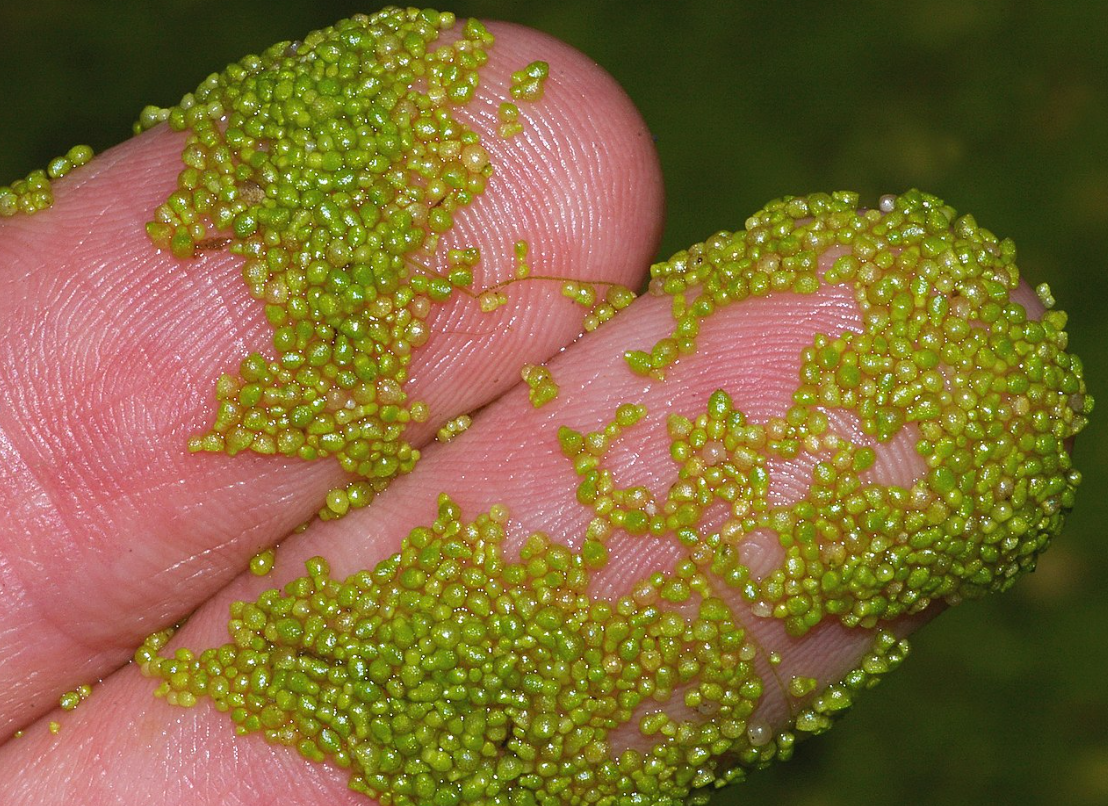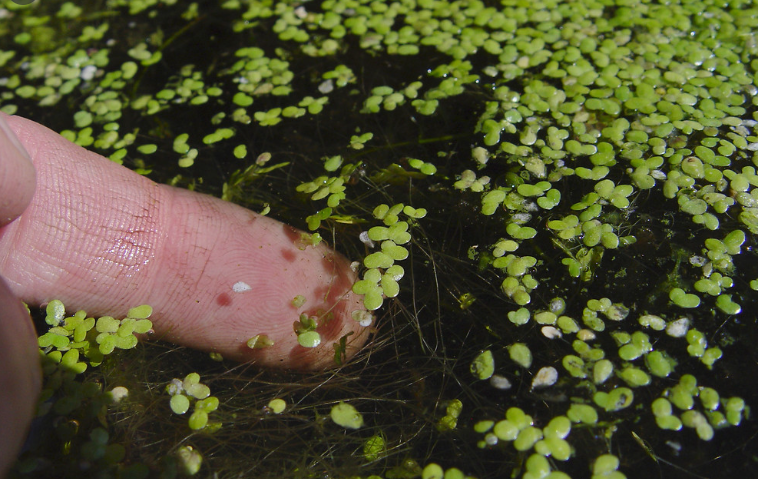
Duckweed and watermeal are two very similar aquatic plants and are often found together in the same water body. They are both free-floating plants and once established, they are extremely resilient and become difficult to eradicate. They spread rapidly across still water bodies and under ideal conditions they can double their area coverage in a few days. Once a water body is covered with duckweed and/or watermeal, natural oxygen transfer from the atmosphere is greatly reduced, the sunlight that native aquatic plants need to survive is restricted and fish kills are common.
Aside from being somewhat unsightly, the restriction of sunlight reduces the ability of sub-surface plants to photosynthesise and produce oxygen. This may result in levels of dissolved oxygen below what is required for a healthy fish population. A strong odour may then develop and organic sediment loaded with excess nutrients will accumulate. To keep a water body healthy, it’s best to keep them under control.
It is thought that duckweed can be used as a water purifier as the plant consumes nitrogen and phosphorus from the water. Due to this nitrogen and phosphorus consuming quality, you will find duckweed in many ponds that have problems due to agricultural and fertilizer run-off. However, using duckweed for water cleansing is certainly a low-tech and time-consuming process and duckweed cannot get rid of pesticides, heavy metals, or toxic substances. Also, as mentioned above, duckweed can very quickly cover a whole pond and is difficult to get rid of manually once it is overgrown.
Identifying Duckweed and Watermeal
Duckweed and watermeal are small, stemless, free-floating, aquatic flowering plants which grow across the world except in very cold regions.
Duckweed and watermeal normally do not grow in rivers unless there is a reduced flow of water. Generally, the reproduction rates of duckweed and watermeal are astounding given the right nutrient load in the water. It can cover 1 acre in just 45 days if left unrestrained.
- Duckweed and watermeal are bright green and when fully grown can form carpet-like groups
- Common Duckweed has 1 to 3 leaves measuring 1.5mm to 3mm in length
- Giant Duckweed has 1 to 4 leaves measuring 1.5mm to 6mm in length
- 1 to 6 roots may grow from each “leaf”
Watermeal

Duckweed

How to Get Rid of Duckweed and Watermeal Naturally
While many people resort to chemicals to control duckweed and watermeal, the ideal solution is to manage duckweed without the use of chemicals as they can be disruptive to aquatic ecosystems and threaten native aquatic wildlife and plants. In addition, killing plants only adds to the organic sediment on the bottom, increasing the available nutrients. This compounds the problem with duckweed and watermeal returning as more seeds germinate from the nutrient-rich sediment. This creates a cycle involving multiple chemical applications and more dead plant biomass. Natural solutions for eliminating duckweed and watermeal are not necessarily quick fixes in many circumstances due to the excessive nutrients available from years of sediment build-up.
Aeration and Circulation for Duckweed and Watermeal Control
Oxygen is the most important constituent of a lake or pond’s health as it is an essential element for most aquatic organisms. Therefore, there is a direct relationship between the oxygen concentrations and exchanges occurring in a lake or pond, and the physiological status of aquatic organisms. Without oxygen at the bottom of a pond or lake, anaerobic bacteria (those that live without oxygen) produce an acid environment. These acids not only increase acidity but also cause the release of phosphorus and nitrogen from the organic sediment into the water column of the pond or lake. These nutrients feed duckweed and watermeal increasing their quantity and density.
Aeration systems are ideal for oxygenating a lake or pond that has been overtaken by duckweed or watermeal. By increasing dissolved oxygen in an environment depleted of oxygen, water quality improves and fish and other aquatic wildlife thrive. Aerobic bacteria thrive off increased oxygen levels, resulting in improved water quality and natural decomposition of organic matter—reducing duckweed and other plant life.
Parklink’s approach to natural control involves the use of aeration and or circulation. Our aeration technology is proven to oxygenate the entire water column and the organic sediments that cover the base. Parklink’s biological additives are often used in conjunction with aeration to assist the decomposition of organic sediment and nutrients.
